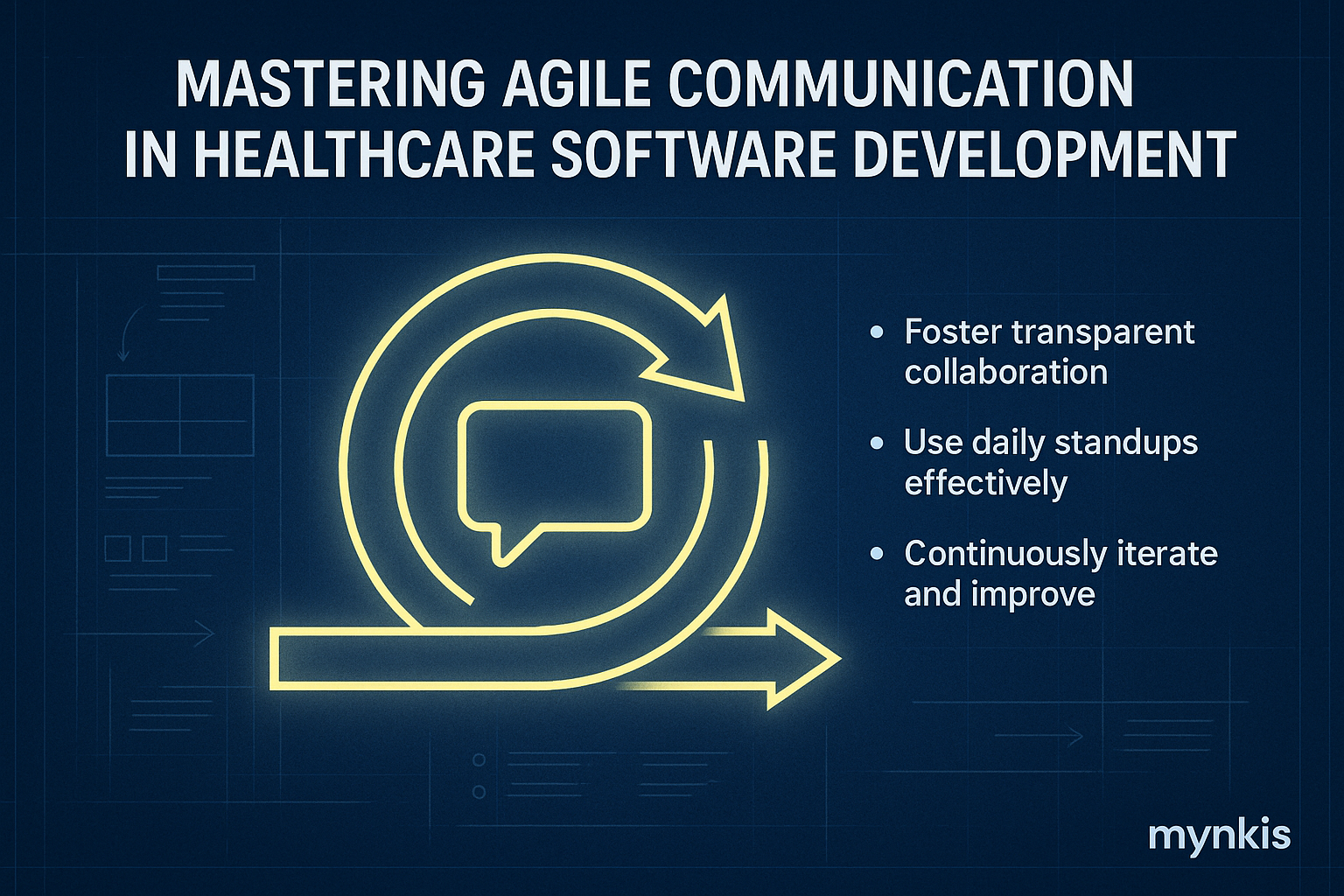Schedule a Demo
In the realm of healthcare software development, especially for clinics and hospitals crafting compliant and secure systems for patient portals and data management, mastering the art of Agile communication is crucial. Agile methodologies aren't just processes but lifelines that ensure the project remains aligned with client expectations and regulatory standards throughout its lifecycle. What makes Agile shine in such critical projects is its emphasis on continuous, clear communication, enabling stakeholders to adapt to evolving needs with minimal disruption.
Think of Agile communication as the heartbeat of your software development project. It keeps everyone alive and thriving. From daily stand-ups to biweekly sprint reviews and retrospectives, each touchpoint is designed to ensure that the pace remains steady and the direction correct. In my experience working with various healthcare providers, I've seen how these rhythmic checkpoints can turn potential project disasters into triumphs through early issue identification and swift resolution.
Clear and transparent communication forms the bedrock of Agile. For healthcare institutions, where data privacy and compliance are paramount, there's no room for misinterpretation or delays in message relay. Agile teams often use tools like Jira or Trello to track progress and facilitate open dialogues, ensuring that every team member, from developers to compliance officers, is on the same page. As Brian Chesky, CEO of Airbnb, once noted, "It's amazing how much you can accomplish when everyone is moving in the same direction."
The healthcare landscape is notoriously fluid, with regulations like HIPAA constantly evolving. Here, the flexibility offered by Agile communication shines through. If a regulatory update demands a swift change in the software design or functionality, Agile's iterative approach allows for adjustments without upending the project's timeline. I recall a project where last-minute changes in privacy laws required quick adaptation, and our Agile methodology prevented any hiccups in delivery.
Agile isn't just for the development team; it's a collaborative symphony involving clients, end-users, and regulators. Regular demos or sprint reviews give healthcare providers a chance to interact directly with what's being built, offering feedback that’s promptly incorporated. This engagement drastically reduces the gap between expectation and reality, leading to a product that truly serves its intended purpose. From a project I led for a regional hospital network, we noted a significant boost in stakeholder satisfaction because everyone felt heard and involved.
Modern tools like Slack, Microsoft Teams, and dedicated Agile platforms pave the way for effective communication. While designing patient portal interfaces for a local clinic, the use of Slack channels for real-time feedback made a remarkable difference in responsiveness and solution accuracy. Digital tools enable teams spread across different geographies to stay connected, ensuring that development remains dynamic yet compliant.
Despite its strengths, Agile communication faces hurdles, especially in large, complex healthcare environments. Divergent priorities among stakeholders can disrupt the flow. In one project, we noticed conflicting needs between clinicians and administrative staff; it took robust negotiation skills to align them on a common goal. Such instances highlight the importance of flexibility and, more critically, of truly listening to every voice in the process.
To keep Agile communication successful, project managers must maintain momentum. This involves crafting concise yet comprehensive updates after each sprint. Sharing advancements not only with the development team but also with hospital management helps in demonstrating progress and securing further buy-in. It also helps in preempting potential regulatory or client concerns.
In international healthcare software development, language barriers can emerge as a significant hurdle. Clear translations of technical jargon and project specifics into a commonly understood language are imperative. In a project involving stakeholders from multiple countries, we utilized professional translators and bilingual project managers to maintain clarity and coherence throughout the Agile process.
The end-user in healthcare, be it patients or medical staff, should always drive software development. Agile communication facilitates incorporating their feedback at any stage of development. From one hospital project, a nurse’s suggestion during a sprint demo drastically simplified a complex UI element, improving user experience and safety of operations.
Healthcare software must unequivocally meet privacy and compliance standards, such as HIPAA or GDPR. Agile communication ensures these concerns are continually addressed through regular check-ins with compliance officers. I've found this approach vital to avoid any downstream legal or operational complications, enabling projects to navigate the complexities smoothly.
With the rise of remote work, managing a distributed Agile team poses unique challenges. Ensuring clear communication channels and well-defined roles, combined with the use of robust virtual collaboration tools, remains key. In a project for an international medical research institution, daily stand-ups via video ensured alignment, despite the time zone differences.
Leadership significantly influences Agile communication's effectiveness. It's vital for leaders to model open communication, actively soliciting feedback and demonstrating adaptability. When the executive team at a multi-state healthcare network actively participated in our sprints, it not only boosted morale but also inspired trust and alignment throughout the organization.
Introducing Agile into healthcare software development is one thing; sustaining it is another. It requires ongoing training, the fostering of a culture of openness, and a commitment to iteratively refining processes based on what's learned. An organization I worked with adopted monthly Agile workshops, which significantly increased the team's efficiency over time and ensured that the initial momentum was not lost.
